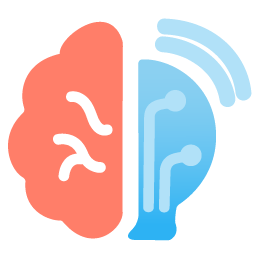Why Leaders Must Write to Lead in 2025 (Part 2)
Part 2: The System That Makes It Sustainable (Guest)
Thanks for reading! Join leaders worldwide who are future-proofing their leadership with Premium access to exclusive tools, direct guidance, and our leadership community. Discover what you're missing here with a free trial.
PS: Many subscribers get their Premium membership reimbursed through their company’s professional development $. Use this template to request yours.
In Part 1, James Presbitero showed us how to maintain authenticity while leveraging AI, how to become "unpromptable" and build genuine authority without losing your voice.
But even the most authentic leaders face a practical reality: how do you maintain consistent, quality output without burning out?
This is where most well-intentioned leaders fail. They start strong, publish a few thoughtful pieces, then get overwhelmed by the demands of regular content creation. The problem isn't lack of authenticity or insights, it's lack of systems strategy.
That's exactly what happened to me early on. Every article required starting from scratch. Every insight had to be captured manually. Every post demanded hours I didn't have.
Then I realized something crucial: the best content systems don't create more work, they extract value from work you're already doing.
The Systematic Approach
This brings us to Luan Doan, founder of Solo AI Lab. As a naturally introverted leader who transformed his relationship with content creation through systematic thinking, Luan has built what I consider the most practical framework for busy executives who want to write consistently without sacrificing their core responsibilities.
His approach addresses the two biggest barriers that stop leaders from writing publicly:
"I don't know what to write about" and "I don't have time for this."
But more importantly, he does it in a way that enhances your leadership effectiveness rather than competing with it.
What you're about to read isn't just content strategy, it's operational leadership thinking applied to thought leadership.
Here’s Luan…
The Busy Leader's Content Operating System
Recently, Joel Salinas asked me and James Presbitero to collaborate on a series about why leaders need to be creators. I was excited about this opportunity.
I'm naturally introverted and not drawn to being a content creator in public. For a long time, this held me back from sharing what I know. But I understood this was necessary for my long-term vision, so I decided to start sharing what I know. I began with a newsletter on Substack, focusing on practical AI guides for solo entrepreneurs.
Since content creation isn't natural for me, I was spending too much time and energy on it, affecting my focus on research and problem-solving, work I'm actually good at. That's when I approached this like any other business problem.
Here's what I love: research, applying technology, automation, systematizing processes, and AI to solve work problems. This became an opportunity to research and optimize the entire process systematically, approaching it as a leader who manages and systematizes.
Through this journey, I discovered that most busy leaders face the same fundamental challenges, and there are systematic ways to solve them.
The Two Barriers Stopping Every Busy Leader
The biggest problem for extremely busy leaders? Two psychological barriers that make content creation feel impossible.
Barrier 1: "I don't know what to write about." Despite being experts, they stare at blank pages feeling idea-less. Yesterday's strategic decision becomes today's forgotten wisdom.
Barrier 2: "I don't have time for this." Even with ideas, repetitive tasks (formatting, posting, scheduling) feel overwhelming. "Time-strapped" becomes the perfect excuse to avoid starting.
Leaders think they need to become "content creators" when they already have everything needed.
The Mindset Shift That Solves Both Problems
Insight 1: Your ideas already exist. Leaders create valuable content daily through meetings, emails, strategic decisions. Yesterday's team explanation was content waiting to be captured.
Insight 2: Repetitive work can be systematized. The time-consuming parts (formatting, posting, organizing) are perfect for automation. The creative thinking? That's already happening in your regular work.
The problem isn't lack of creation or time. It's lack of systematic extraction plus reusable processes.
Stop trying to "become a content creator." Start extracting existing materials and building systems for repetitive tasks. This addresses both barriers: no more blank page paralysis, no more time drain from repetitive work.
The Leadership Approach: Systematizing Content with AI
So how do we set up this systematic approach? You'll build your content assistant in two parts that directly solve the problems we discussed.
Step 1: Create Your Claude Project
Start by setting up your project instructions. Think of this as your assistant's job description:
Role definition: What is this assistant responsible for?
Communication style: How should it write and communicate?
Workflow processes: What's your preferred work sequence?
Output formatting: How do you want results structured?
Constraints: What should it never do?
Decision-making frameworks: How should it make choices?
Add project knowledge files: examples of your work, writing style documents, references, and templates. This helps your assistant understand your work processes and objectives.
This step eliminates repetitive explanations, addressing the "I don't have time" barrier.
Step 2: Connect Through MCP Server
Connect your AI to work tools (Gmail, Google Calendar, Notion, Slack, Google Drive, meeting transcripts) so it can gather the latest data from your daily work and use this information to generate content ideas for you. I've explained more about MCP server and its potential for leaders in another article.
This step solves the "I don't know what to write about" barrier by turning your existing work into content opportunities.
Test, Learn, and Optimize
Once your assistant is set up, start testing it with real content tasks. Pay attention to gaps between results and expectations. These show you where to refine your instructions.
Continuously optimize based on these tests. Each interaction teaches you how to communicate more effectively with your AI assistant.
In my experience, this made the biggest difference: reflect on requests you repeat most with AI, then add those to your instructions. Instant time savings.
Try this prompt:
Analyze our conversation history and identify the requests or instructions I repeat most often.
Show me the top 3-5 patterns that I should add to my project instructions.This transforms your AI from a tool you manage into an assistant that anticipates your needs.
Once you've completed this setup, here's what becomes possible: Picture the complete workflow:
Write a tweet based on today's work…
→ AI analyzes your day
→ suggests content ideas
→ you choose
→ AI writes in your style
→ you review
→ AI posts.
You're not simply becoming a content creator. You're a leader systematically managing effective content creation.
Thanks, Luan Doan!!!
If You Only Remember This
Your best content ideas already exist in your daily leadership work—build systems to capture and refine them
The goal isn't to become a content creator—it's to systematically extract value from work you're already doing
AI should amplify your unique perspective and streamline repetitive tasks, never replace your core thinking
Sustainable thought leadership requires both authenticity (Part 1) and systematic processes (Part 2)
Start writing publicly now—the perfect system develops through practice, not planning
What's one leadership decision or insight from this week that could help someone else in your industry? How might you turn that into your first piece of public content?
Let’s Connect
I love connecting with people. Please use the following connect, collaborate, if you have an idea, or just want to engage further:







I've loved this 2 part series & Restacked them both ✨
Powerful framing!